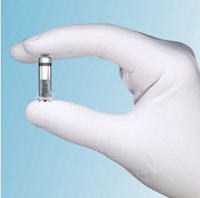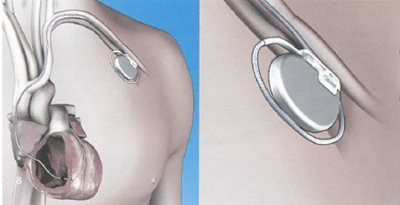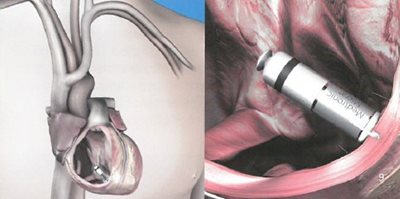What heart condition needs a device like Micra?
Micra is used for the treatment of bradycardia. Bradycardia is a heart rhythm condition in which the heart beats too slowly. A healthy heart beats about 60-100 times per minute, pumping about 284 liters of blood each hour. A heart with bradycardia beats fewer than 60 times per minute. At that rate, the heart may not be able to pump enough oxygen-rich blood to the body during activity or exercise resulting in feeling dizzy, tired, short of breath, or having fainting spells.
How is bradycardia diagnosed?
Only a doctor can determine if you have bradycardia, and if so, how far it has progressed. To rule out or confirm the diagnosis of bradycardia, one or more diagnostic tests may be ordered. The specific tests depend on the suspected heart rhythm problem.
These tests may include:
- Electrocardiogram (ECG or EKG)
- Exercise ECG, or stress test (measures your heart rhythm while you’re engaged in a physical activity)
- Holter or event monitor
- Insertable cardiac monitor
- External loop recorder
- Tilt table test
- Electrophysiology study (EP Study)
Treating bradycardia
Treatment strategies vary, depending on your bradycardia causes and symptoms, but might include new medication or an adjustment to medications you are currently taking to restore your normal heart rate. If medication fails to restore a normal heartbeat, a pacemaker can be used to regulate your heart’s rhythm.
A pacemaker has two main purposes: pacing and sensing. A pacemaker mimics the heart’s natural rhythm when there are disturbances, such as pauses in the natural rhythm.
- It “paces” by sending an electrical impulse to the heart when the heart’s rhythm is too slow or interrupted.
- A pacemaker “senses” (monitors) the heart’s natural electrical activity. When the device senses a natural heartbeat, it will not deliver a pacing pulse.
Traditional pacemakers vs. Micra 
Until recently, most pacemakers were about the size of tea bag and surgically implanted under the skin in the upper chest area. The device required a lead (pronounced LEED) to be connected to the pacemaker and threaded into the heart. The lead carries electrical signals from the pacemaker to your heart to help it beat regularly.
Micra is 93% smaller than traditional pacemakers, about the size of a large vitamin capsule, and has a battery that lasts as long as a traditional pacemaker. Unlike a standard pacemaker, Micra is implanted into the heart through a vein in your leg and does not require a lead.
Micra’s miniature size and minimally-invasive approach leaves no visible signs of a medical device under the skin. This can mean fewer post-implant activity restrictions and no obstructions to shoulder movement.
Comparing how pacemakers are implanted
Traditional pacemakers are implanted through a surgical procedure that involves:
- A small incision, approximately 2 inches long, made in the upper chest.

- A lead (thin insulated wire, like a spaghetti noodle) is guided through a vein into the heart.
- Your doctor connects the lead to the pacemaker and programs the device.
- The pacemaker is then inserted beneath the skin.
- The doctor tests the pacemaker to ensure it is working properly.
- The incision is then closed.
Micra is implanted using a catheter. That process involves:
- Insertion of a straw-like catheter system into a vein, typically near the upper thigh area of your leg.

- Using the catheter system to move the Micra into the right ventricle of the heart.
- Placing the Micra against the heart wall and securing it.
- Testing by the doctor to ensure the Micra is working properly.
- Removal of the catheter system.
A Micra’s battery power is affect by many factors, including the nature of the heart condition. The estimated average battery life for Micra is 12 years after being implanted, but each patient’s experience will vary.
Additionally, the innovative design of Micra reduces the rate of complications, such as implant-site and electrical lead problems, by almost half.
Common questions about Micra
Many people have questions about how Micra will affect their daily lives. Here are some of the most common questions (with answers) we get from patients:
- Is it safe to have an MRI scan if you have an implanted Micra? Yes. It is safe to have an MRI.
- Can I go through airport or similar security checkpoints? Patients with a Micra can go through security. Some precautions are needed, but patients will be educated about those.
- Can I use my cell phone? Yes. Patients can use a mobile/cell phone. However, it’s recommended that patients not keep their phones in a chest pocket of their shirt or jacket.
In closing, if you believe you have symptoms related to a low or slow heart rate, we would be glad to evaluate your symptoms and discuss any needed treatments, which may include Micra.
For more specific information about Micra, visit the
Medtronic website.